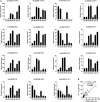Metabolomic and transcriptomic analyses reveal the mechanism of sweet-acidic taste formation during pineapple fruit development
- PMID: 36161024
- PMCID: PMC9493369
- DOI: 10.3389/fpls.2022.971506
Metabolomic and transcriptomic analyses reveal the mechanism of sweet-acidic taste formation during pineapple fruit development
Abstract
Pineapple (Ananas comosus L.) is one of the most valuable subtropical fruit crop in the world. The sweet-acidic taste of the pineapple fruits is a major contributor to the characteristic of fruit quality, but its formation mechanism remains elusive. Here, targeted metabolomic and transcriptomic analyses were performed during the fruit developmental stages in two pineapple cultivars ("Comte de Paris" and "MD-2") to gain a global view of the metabolism and transport pathways involved in sugar and organic acid accumulation. Assessment of the levels of different sugar and acid components during fruit development revealed that the predominant sugar and organic acid in mature fruits of both cultivars was sucrose and citric acid, respectively. Weighted gene coexpression network analysis of metabolic phenotypes and gene expression profiling enabled the identification of 21 genes associated with sucrose accumulation and 19 genes associated with citric acid accumulation. The coordinated interaction of the 21 genes correlated with sucrose irreversible hydrolysis, resynthesis, and transport could be responsible for sucrose accumulation in pineapple fruit. In addition, citric acid accumulation might be controlled by the coordinated interaction of the pyruvate-to-acetyl-CoA-to-citrate pathway, gamma-aminobutyric acid pathway, and tonoplast proton pumps in pineapple. These results provide deep insights into the metabolic regulation of sweetness and acidity in pineapple.
Keywords: Ananas comosus; citric acid; fruit quality; metabolic genes; sucrose; transporter genes.
Copyright © 2022 Gao, Yao, Chen, Wu, Wu, Liu, Guo and Zhang.
Conflict of interest statement
The authors declare that the research was conducted in the absence of any commercial or financial relationships that could be construed as a potential conflict of interest.
Figures








Similar articles
-
Expression patterns, activities and carbohydrate-metabolizing regulation of sucrose phosphate synthase, sucrose synthase and neutral invertase in pineapple fruit during development and ripening.Int J Mol Sci. 2012;13(8):9460-9477. doi: 10.3390/ijms13089460. Epub 2012 Jul 26. Int J Mol Sci. 2012. PMID: 22949808 Free PMC article.
-
Comparative metabolomics and sensory evaluation of pineapple (Ananas comosus) reveal the importance of ripening stage compared to cultivar.J Biosci Bioeng. 2021 Dec;132(6):592-598. doi: 10.1016/j.jbiosc.2021.08.008. Epub 2021 Sep 27. J Biosci Bioeng. 2021. PMID: 34593317
-
Genome-Wide Identification and Expression Patterns of AcSWEET Family in Pineapple and AcSWEET11 Mediated Sugar Accumulation.Int J Mol Sci. 2022 Nov 10;23(22):13875. doi: 10.3390/ijms232213875. Int J Mol Sci. 2022. PMID: 36430356 Free PMC article.
-
Nutritional Composition and Therapeutic Potential of Pineapple Peel - A Comprehensive Review.Chem Biodivers. 2024 May;21(5):e202400315. doi: 10.1002/cbdv.202400315. Epub 2024 Apr 11. Chem Biodivers. 2024. PMID: 38484117 Review.
-
Pineapple (Ananas comosus): A comprehensive review of nutritional values, volatile compounds, health benefits, and potential food products.Food Res Int. 2020 Nov;137:109675. doi: 10.1016/j.foodres.2020.109675. Epub 2020 Sep 17. Food Res Int. 2020. PMID: 33233252 Review.
Cited by
-
Multi-omic applications for understanding and enhancing tropical fruit flavour.Plant Mol Biol. 2024 Jul 8;114(4):83. doi: 10.1007/s11103-024-01480-7. Plant Mol Biol. 2024. PMID: 38972957 Free PMC article. Review.
-
Changes in the Metabolome and Nutritional Quality of Pulp from Three Types of Korla Fragrant Pears with Different Appearances as Revealed by Widely Targeted Metabolomics.Plants (Basel). 2023 Nov 27;12(23):3981. doi: 10.3390/plants12233981. Plants (Basel). 2023. PMID: 38068617 Free PMC article.
-
Comparative Transcriptome Analysis Reveals Potential Molecular Regulation of Organic Acid Metabolism During Fruit Development in Late-Maturing Hybrid Citrus Varieties.Int J Mol Sci. 2025 Jan 18;26(2):803. doi: 10.3390/ijms26020803. Int J Mol Sci. 2025. PMID: 39859515 Free PMC article.
-
Transcriptomic and Metabolomic Profiling Reveals the Variations in Carbohydrate Metabolism between Two Blueberry Cultivars.Int J Mol Sci. 2023 Dec 25;25(1):293. doi: 10.3390/ijms25010293. Int J Mol Sci. 2023. PMID: 38203463 Free PMC article.
-
Integrative transcriptome and metabolome analysis reveals the mechanisms of light-induced pigmentation in purple waxy maize.Front Plant Sci. 2023 Aug 15;14:1203284. doi: 10.3389/fpls.2023.1203284. eCollection 2023. Front Plant Sci. 2023. PMID: 37649997 Free PMC article.
References
-
- Aslam M., Deng L., Wang X. B., Wang Y. (2019). Expression patterns of genes involved in sugar metabolism and accumulation during peach fruit development and ripening. Sci. Hortic. 257:108633. 10.1016/j.scienta.2019.108633 - DOI
LinkOut - more resources
Full Text Sources
Other Literature Sources

